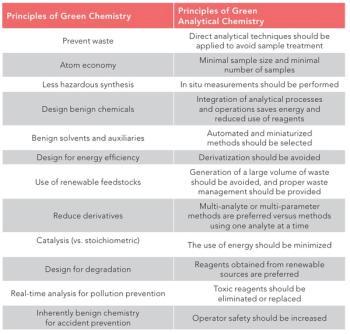Key Points:
- Injecting small volumes of solvent that produce vapor clouds significantly smaller than the liner volume in split mode leads to poorer reproducibility (%RSD) and reduced sample transfer to the column. Optimal performance occurs when the vapor cloud more closely matches the liner’s effective volume.
- Early eluting, more volatile alkanes (e.g., C8–C12) are more sensitive to underfilled liners, showing higher %RSD and lower signal response, especially at very low injection volumes (e.g., 0.2 µL).
- In contrast, higher molecular weight alkanes are less affected under these conditions.
There are many different injection port liner configurations, all ofwhich come in a variety of internal volumes. It has been well established that injecting too much solvent into a liner in splitless mode results in a vapor cloud that exceeds the internal volume of the liner, which then leads to peak distortion, split peaks, and poor reproducibility. High-molecular-weight compounds condense on the cooler surfaces outside of the liner and are not completely transferred onto the column causing carryover (memory effects) and compound bias. This is known as discrimination where an inverse relationship occurs between the molecular weight and response of a compound. Recent studies have demonstrated that injecting too little into a liner in splitless mode can cause band broadening and increased activity. This article will examine these effects in split mode.
In both split and splitless injection, a liquid solvent is introduced into a heated injection port, where rapid solvent expansion occurs to vaporize the sample for transfer to the head of the column. In splitless mode, the majority of the sample is transferred to the column, which can take up to two minutes; in split mode the sample transfer is many times faster, which minimizes exposure of thermally labile compounds with hot metal surfaces and produces a tight band of condensed compounds at the head of the column. Konrad Grob detailed the negative chromatographic effects of injecting too much solvent into a splitless liner back in 1986 (1), but much less is known about injecting smaller amounts of solvent that do not fill the effective liner volume with solvent in split mode. Erica Pack and Mark Badger demonstrated that when the vapor cloud is not closely matched with the liner volume in splitless mode, an increase in band broadening and a decrease in sensitivity is observed when splitless hold times are not changed (2). This article will evaluate 0.2 µL, 0.5 µL, 1.0 µL, 2.0 µL, and 4.0 µL of alkanes ranging from C8 (n-octane) to C40 (n-tetracontane) in hexane. The standards will be made up in different concentrations to maintain 5 ng on-column concentration and allow for direct comparisons.
Experimental Design
A 5% diphenyl 95% polydimethylsiloxane, “5-type phase” 30 m × 0.25 mm, 0.25-µm column (Restek) installed into a flame ionization detector (FID) (Agilent)with a column flow of 1.44 mL/min was used. A GC oven program of 50 °C (hold 0.5 min), 28 °C per minute to 330 °C (hold 5 min) was used for the three different split injections. Split ratios of 5:1 were used with a 4 mm precision-style liner (Restek) where the wool was held on top in position by baffles. Compounds chosen were even numbered alkanes ranging from C8 (n-octane) to C40 (n-tetracontane) in hexane. Concentrations were adjusted to maintain 5 ng on-column for 0.2 µL, 0.5 µL, 1.0 µL, 2.0 µL, and 4.0 µL injections. Conditions were tested with an Agilent 7890 gas chromatograph with a standard split/splitless injection port and an Agilent 7693A autoinjector using a 10 µL syringe. Each of these tests were performed three times and the average of these values presented. Following the initial results, additional testing was performed using a split injection with 5 µL syringe needle to verify that percent relative standard deviations (%RSDs) were not a function of injection volume reproducibility.
Results and Discussion
Konrad Grob discussed the difficulty inherent in calculating the effective liner volume because it requires the internal diameter of the liner, the injection port temperature, head pressure, amount injected, and the solvent to all be determined. Column manufacturers now provide solvent expansion calculators (3), which has simplified determining the size of the solvent vapor cloud. Figure 1 outlines the solvent vapor cloud for a 0.2 µL injection (39 µL) all the way up to a 4 µL injection (783 µL), where a vapor cloud of over 493 µL would result in poor reproducibility, discrimination, and carryover. When injecting less than the recommended amount, the alkanes C14 (n-tetradecane) through C40 (n-tetracontane) exhibited identical peak shapes and similar responses. The early eluting alkanes from C8 (n-octane) through C12 (n-dodecane) exhibited measurable differences. C8 (n-octane) was eliminated from evaluation based on the compound’s proximity to the solvent and C10 (n-decane) showed measurable increases in %RSD for replicates and decreases in the amount of sample transferred to the column.For example, a 1 µL injection of hexane produced a vapor cloud of 196 µL, an amount on‑column 26% less with a 40% increase in %RSDs. The differences were far more dramatic when injecting only 0.2 µL, where the %RSD increased fivefold, whereas response only decreased by 33% (Figure 2). The overlaid five chromatograms of C10 (n-decane) with varying amounts injected are a good visual demonstration of the increase in sensitivity for the amount injected (Figure 3). While the 4 µL solvent volume had the largest response, the higher molecular weight compounds, particularly those eluting beyond C32 (n-dotriacontane), were not completely transferred to the column, resulting in discrimination. The observed retention shift for the 4 µL injection has been documented in a previous article in The Column, which described increases in retention even in split mode, given that the alkanes are retained in the hexane solvent (4).
Conclusions
Injecting too much solvent into an inlet has been shown to be detrimental in split mode. When the sample concentration was adjusted to maintain 5 ng on-column for different amounts of hexane, the injections that produced a vapor cloud that only expanded to half (or less) than the effective liner volume resulted in less reproducibility (higher %RSDs) and less amount on‑column. While this data were generated for hexane under listed conditions, it is important to take into consideration the amount of solvent injected and match the vapor cloud with your liner volume.
Acknowledgment
Special thanks to Jaap de Zeeuw (Restek) for technical advice and review.
References
(1) Grob, Jr., K. Classical Split and Splitless Injection in Capillary Gas Chromatography; Wiley, 1986.
(2) Pack, E., Badger, M. Improve Narrow-Bore GC Column Performance with Intermediate-Volume (IV) Inlet Liners. Restek website. https://uk.restek.com/articles/improve-narrow-bore-gc-column-performance-with-intermediate-volume-iv-inlet-liners (accessed 2025-05-07).
(3) Solvent Expansion Calculator.Restek website. https://uk.restek.com/solvent-expansion-calculator?srsltid=AfmBOopfFq0tOP2IwqPTytdWlQeY_aSx6WC2A0gkcEu36oEfXhNG1RD5 (accessed 2025-05-07).
(4) English, C. Selectivity Differences Resulting from Analytes Interacting with the Solvent and Stationary Phase. The Column 2021, 17 (6), 2–6.
Chris English has managed a team of chemists in Restek’s innovations laboratory since 2004. Before taking the reins of the laboratory, he spent seven years as an environmental chemist and was critical to the development of Restek’s current line of volatile GC columns. Chris holds a BS in environmental science from Saint Michael’s College, USA.





